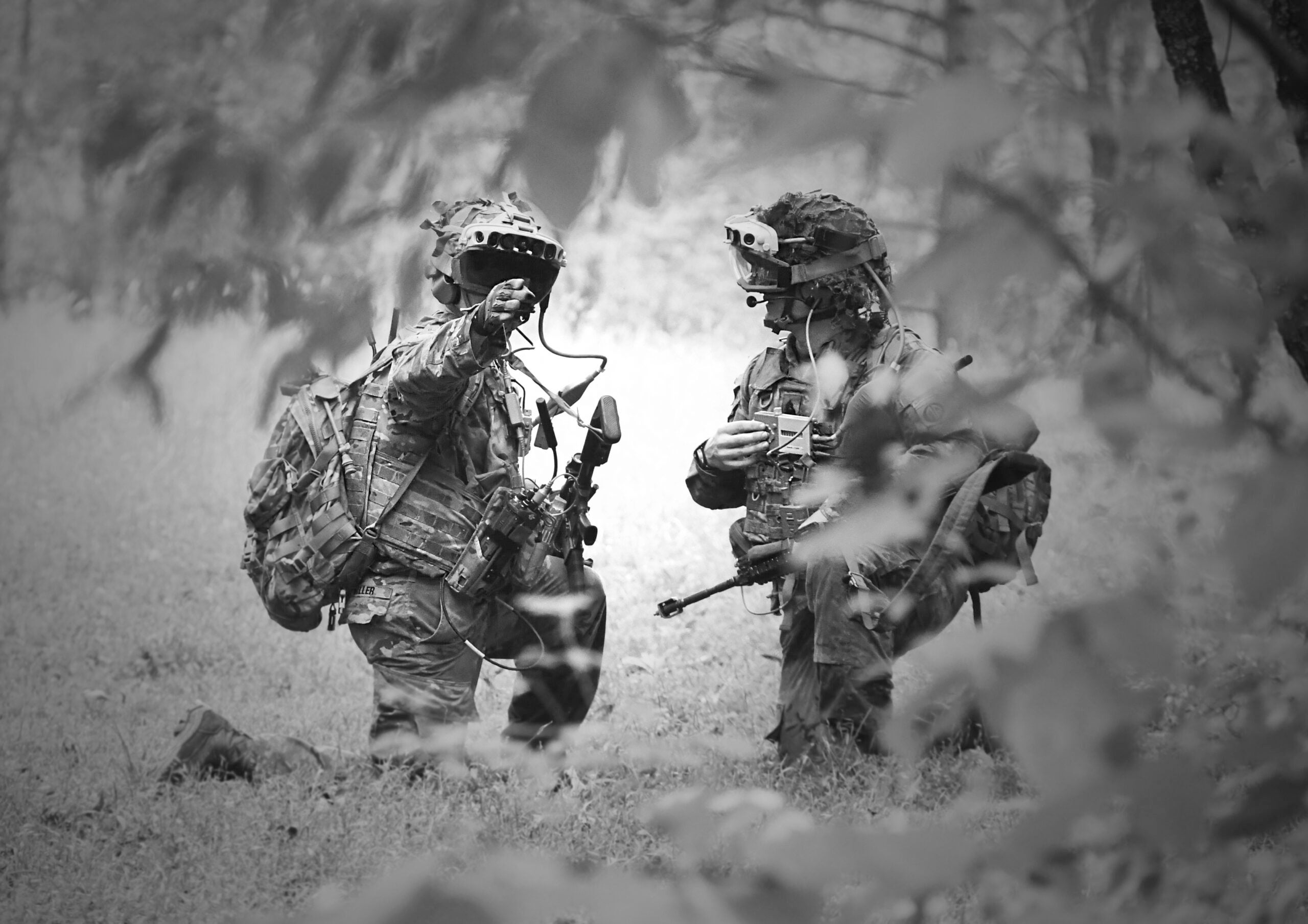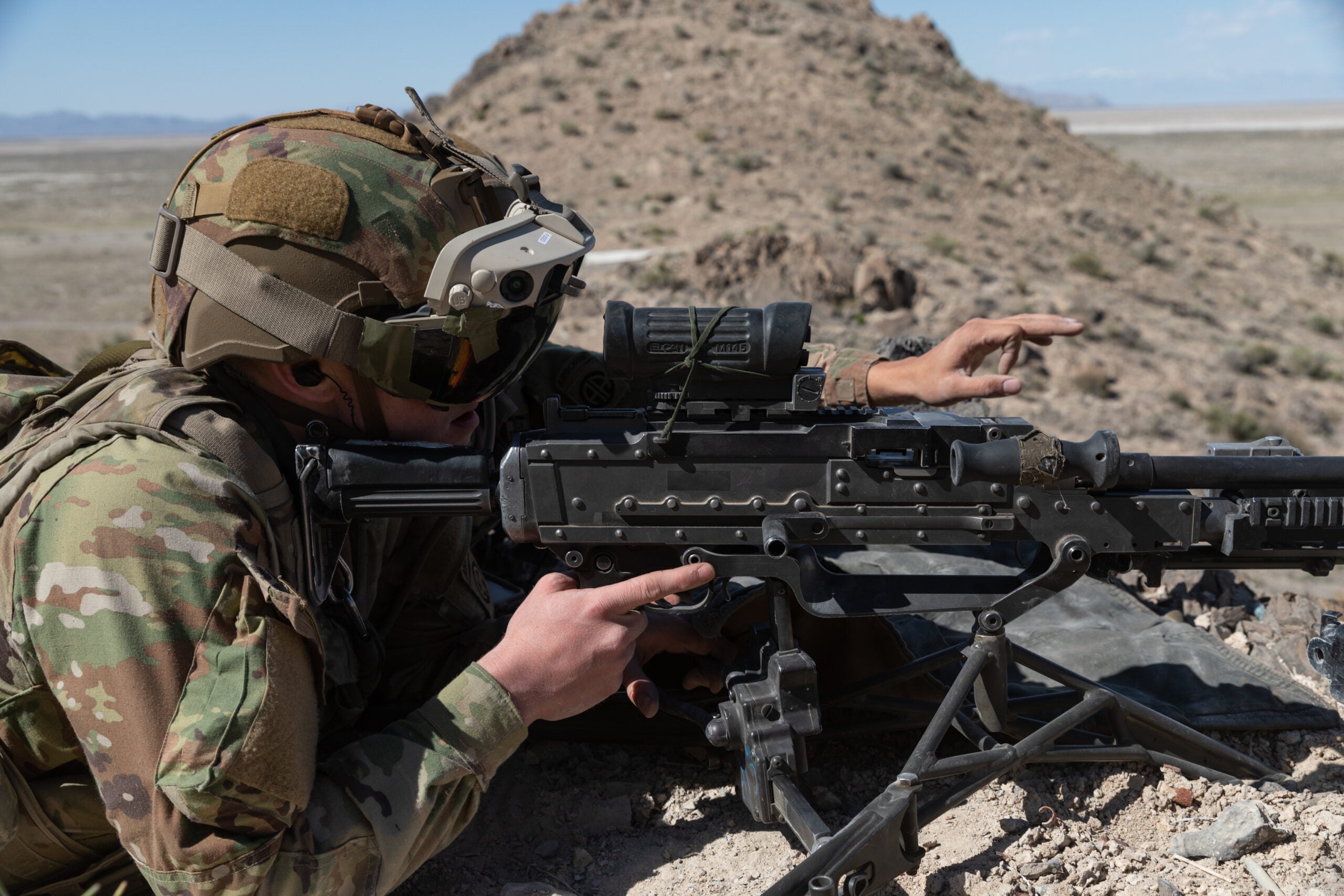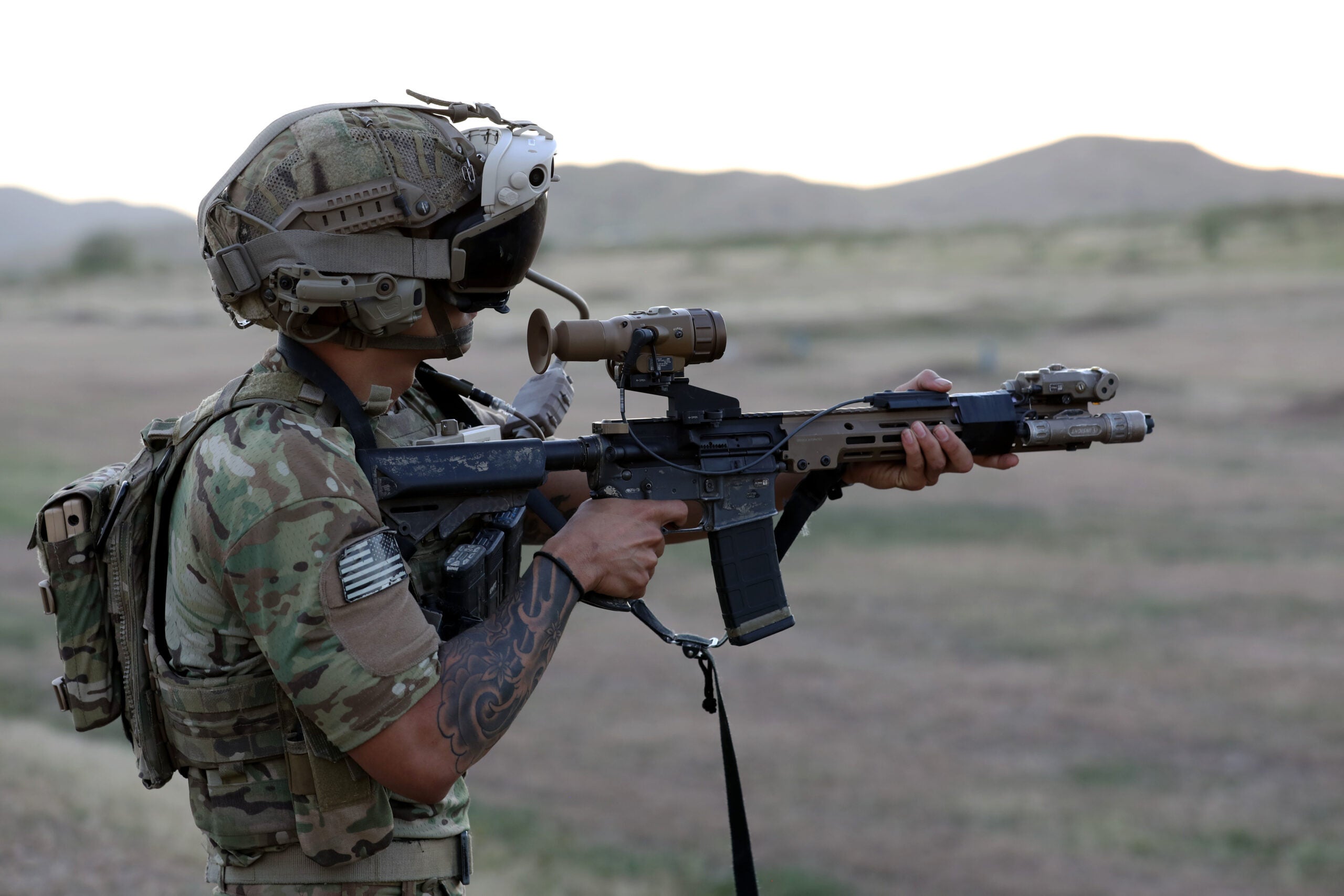The Army hasn’t gotten enough feedback from soldiers to know if their latest and greatest futuristic headset is even something they want, according to a Pentagon Inspector General report released Friday.
The report warned that while the Army has conducted what it calls “soldier touchpoints” with the Integrated Visual Augmentation System (IVAS), specific thresholds the program needs to meet to be considered “accepted” by the force that will use it haven’t been defined. And without that, the report said, the Army could be wasting billions.
“Procuring IVAS without attaining user acceptance could result in wasting up to $21.88 billion in taxpayer funds to field a system that soldiers may not want to use, or use as intended,” the redacted report said.
The IVAS is one of the most-hyped developments from Army Futures Command, a relatively new command the Army has charged with modernizing the force. The goggles, developed with Microsoft and based on the company’s HoloLens 2, are outfitted with high-resolution night vision and the ability to see through smoke. Augmented reality features can provide a three-dimensional map of the battlefield to increase soldiers’ awareness; offer on-the-spot language translation, and project a life-like training environment for soldiers to practice running through missions ahead of time.
Subscribe to Task & Purpose Today. Get the latest in military news, entertainment, and gear in your inbox daily.

The IVAS will also be used in coordination with Army vehicles with the intent of allowing soldiers to see outside of armored vehicles before stepping foot outside the door. During the early days of the COVID-19 pandemic, the thermal sensors in the goggles were even used by the Army to help “rapidly assess” new soldiers’ temperatures as they arrived at Fort Benning, Georgia.
But it hasn’t been all smooth sailing for the program. The rollout of the goggles was delayed last year, pushing the date for fielding the system to soldiers to September 2022, instead of the originally-planned date of 2021. Then just two months later, Congress said it would withhold 25% of the funding for the program until the service answered questions about the delays.
In talking about the IVAS, the Army has been particularly proud of its “soldier-centered design” model, which boils down to having soldiers ensure the goggles work the way they need them to before the Army starts issuing the system. While seemingly common sense, it’s a “significant shift from the traditional acquisition process,” the IG report acknowledges.
So far, soldiers who have gotten to test the system have been impressed.

One soldier who tested the goggles last February said the IVAS has “countless uses like land navigation, being able to track things while on the battlefield, moving through urban complexes, moving through open terrain, it’s insane.”
Another soldier who also tested the goggles last February said the IVAS “changes how we operate.”
“Now guys aren’t hanging out of vehicles in dangerous situations trying to get views on what’s going on,” Sgt. Philip Bartel said in an Army release. “Leadership will be able to maneuver their elements and get view-on-target without having to leave the safety of their armored vehicles. Maneuvering elements with that kind of information will minimize casualties and will overall drastically change how we operate and increase our effectiveness on the battlefield.”
Indeed, surveys by the IG on the IVAS found “both positive and negative user acceptance,” the report says. But it’s unclear what that feedback was, since comments from soldiers were redacted from the report.

The report also said that Army found it hard to assess feedback since officials said some soldiers were resistant to change, were comparing the IVAS prototypes to existing capabilities or didn’t have enough knowledge about how to train on the IVAS. Nevertheless, the inspector general found that the Army hadn’t developed a “percentage or other measurement … to determine whether the system is acceptable.”
The Pentagon watchdog ultimately recommended that the Army “develop Army-wide policy” requiring officials to clearly define how user acceptance of a product would be measured, and that the Program Executive Office (PEO) Soldier clearly define those measurements before the IVAS’ next testing period with soldiers.
According to the report, the Army’s Assistant Secretary for acquisition, logistics, and technology called the idea that billions would be wasted on the project is “misleading,” and rejected the request to develop a policy, saying there is already an Army policy that defines how acceptance is measured. The report said, however, that the Army does not clearly specify “thresholds and objectives” to measure effectiveness with the IVAS, and urged the assistant secretary to “reconsider his position.”
At the end of the day, while the process for the IVAS has proven as long and cumbersome as any other military project, it’s critical that officials get it right and ensure it will be a benefit to soldiers, not a burden.
“Program officials stated that, if soldiers do not love IVAS and do not find it greatly enhances accomplishing the mission,” the report concluded, “then soldiers will not use it.”
What’s new on Task & Purpose
Want to write for Task & Purpose? Click here. Or check out the latest stories on our homepage.
